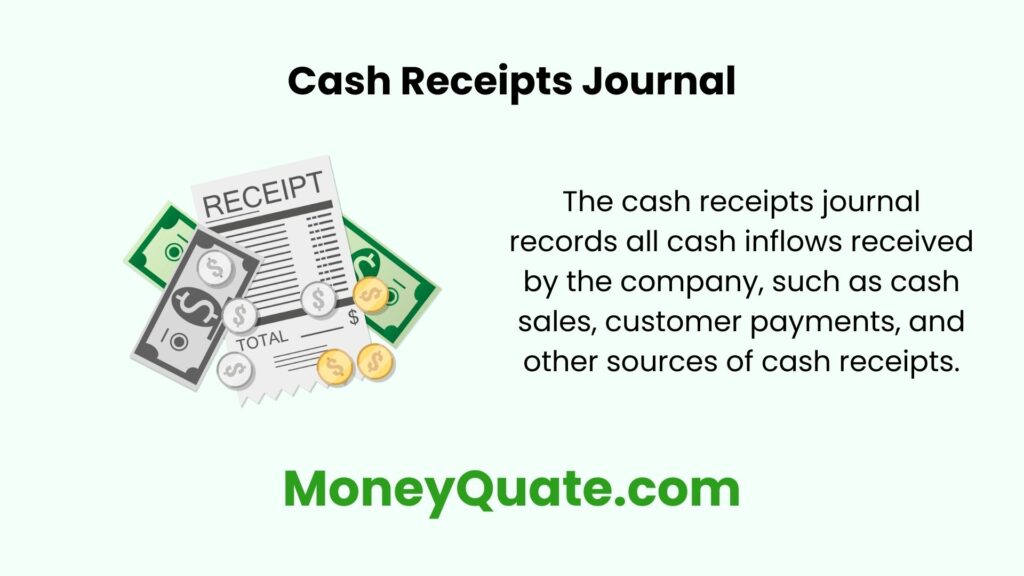Ever wondered how businesses keep track of all the money coming in? They rely on a trusty sidekick – the cash receipts journal.
Think of it as a financial diary that records all the cash a business receives, from everyday sales to customer payments.
As accountants, we use cash receipts journals to ensure everything adds up and provide a clear picture of a company’s cash health. Let’s dive deeper and see how this valuable tool works:
Contents
The Cash Receipts Journal Explained
Imagine a two-columned record-keeper specifically for cash coming into a business. That’s essentially the cash receipts journal!
Here’s a breakdown of what each column tracks:
- Debit Column: This side records all the cash received by the business. Think of it as money flowing into your wallet. Examples include cash sales, customer payments for services, or receiving a loan.
- Credit Column: This side is left blank in a cash receipts journal. While most journals have credits and debits, this one focuses solely on cash inflows.

Balancing the Act
A healthy cash receipts journal is all about keeping things in balance.
Ideally, the total amount of cash received (debit column) should have no corresponding entries in the credit column.
This ensures your records are accurate and reflects the company’s actual cash on hand.
Benefits of Using a Cash Receipts Journal
There are several advantages to using a cash receipts journal:
- Clear Cash Flow Picture: The cash receipts journal provides a quick and easy way to see how much cash is coming in, helping businesses manage their cash flow effectively.
- Error Detection: Regularly balancing the journal helps identify any errors or discrepancies in the records, promoting accuracy and preventing financial headaches.
- Improved Decision Making: By understanding their cash flow, businesses can make informed decisions about spending, borrowing, and investment opportunities.
Real-World Examples
Let’s see the cash receipts journal in action with some user-friendly scenarios:
- Example 1: A bakery starts the day with $1,000 cash on hand. During the day, they sell cupcakes for $200 cash and receive a customer payment of $100 for a cake order. Here’s the cash receipts breakdown:
| Date | Description | Debit | Credit | Balance |
|---|---|---|---|---|
| Today | Opening Balance | $1,000 | – | $1,000 |
| Today | Cupcake Sales | $200 | – | $1,200 |
| Today | Customer Payment | $100 | – | $1,300 |
- Example 2: A freelance writer receives $500 cash from a client for a completed project. Here’s the breakdown:
| Date | Description | Debit | Credit | Balance |
|---|---|---|---|---|
| Today | Client Payment | $500 | – | $500 |
The Takeaway:
The cash receipts journal might seem like a simple tool, but it’s a cornerstone of good financial management.
By keeping track of cash inflows and ensuring everything balances out, businesses can make informed decisions and stay on top of their financial health.
So, next time you hear about a cash receipts journal, remember – it’s not just a record-keeper, it’s a cash flow champion!